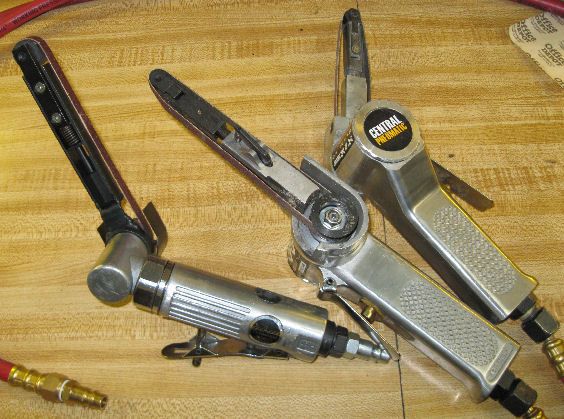Chad.S;n78227 said:
Honestly once I got the guts to try it, the learning curve wasn't bad at all.. I got a few pointers from a guy and about a 30 second lesson, and then I was on my own.. I found after I made the switch I rarely use the Mig welder.. What's the part number on the welding wire. 70S-6??
Chad, I agree on rarely going back to the mig, but I have noticed that some people have a very difficult time learning to tig weld. Those that have learned to weld with oxy/acetylene seem to make the switch easily, not that I have mastered any type of welding, but my efforts are ok for sheet metal.
A few years ago I did some research on mig wire to find which wire would be more malleable, so it could be planished with less fear of cracking, and some of the mig welders might be interested in what I found out.
First of all you need to know what makes metal soft or hard, and the answer---as I understand it--- is the carbon content for the most part. High strength steel used on newer cars has a higher carbon content, although they are also doing many different things to the steel today.
I don't know anything about wire or the chemical makeup of steel, so I contacted someone that knows as much as anyone about welding wire, and here is his answer.
We did tests in our R&D Lab and ER70S-2 was best for easy grinding and sufficiently strong (the same alloy I recommend for welding 4130 to avoid cracking because of its low carbon!) Here is the chemistry of all 3 you asked about.
ER70S-2 carbon 0.04, manganese 1.01, silicon 0.50.
ER70S-3 carbon 0.08 manganese 1.10, silicon 0.50.
ER70S-6 carbon 0.09 manganese 1.60, silicon 0.90.
The main reason it grinds easier is the lower carbon, although ER70S-6 has higher manganese and silicon which also make it even harder to grind!
It was one of the first MIG wires ever sold, that is why the number 2! With AWS designations the last number does not have a meaning other than you have to look at the specification for that number. The 70 refers to the minimum tensile strength in psi, that will be archived. (i.e. minimum is 70,000 psi for an ER70)
The wire is sold today by ESAB as SpoolArc 65, and for marketing reasons it was also sold under the name Easy Grind to the automotive trade in smaller diameters and spools weights. (You might be interested that SpoolArc 65 was used to weld many of the Off-Shore Drill Rigs in the gulf coast by J. Ray McDermott!)
ESAB still sells it as Easy Grind under the AllState brand name (which they also own) Spoolarc 65 and Easy Grind are the same product!
There are other companies selling the alloy so look for ER70S-2 or ESAB Spoolarc 65 or AllState Easy Grind. Don't let a distributor sell you something else because they don't have it on the shelf!

